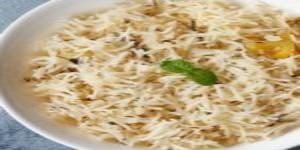
Scope
The Hindu Compliance System gives direction on cooking science which is compiled from Bhaga Shastra. Bhaga Shastra classifies foods into rajasik, tamasik and satvik types. Rajasik food makes one feel agitated, aggressive, lustful and egoistic. Tamasik food makes a person lazy, sleepy and depressed. Satvik food gives clarity to the person and brings him peace of mind leading to bhakti (devotion), tripti (fulfilment) and ananda (bliss).
Six types of tastes are described in the Bhaga Shastra – salt, sweet, sour, hot, bitter and pungent. It states that every meal should include all these tastes so that the appetite is satisfied and the tongue is neutralized by all the tastes being together. As per the instructions in Bhaga Shastra, in order for all parts of the body, mind and brain to function properly, a balanced diet of all these tastes is a must.
Further, the purpose of having all six tastes is to balance the tridoshas in the body, namely vaata (acidic), pitta (alkaline) and Kapha (phlegm). Every ingredient used in Hindu cooking is classified as per its dosha properties.
For thousands of years, Hindus have been cooking food that is organic, nature friendly and with numerous benefits. This standard will help organizations, businesses like hotels, restaurants etc. to cook the food as mentioned in Hindu Scriptures.
Ingredient and Process of Cooking
Kushka, is a rice dish made with spices, aromatic rice such as the basmati, or small rice such as jasmine or jeera variety and ghee. A present day Kushka is a lunch dish, primarily served with kurma or korma and very popular in Southern India. The spices and condiments used in it could include cardamom, cinnamon, bay leaves, coriander and mint leaves, apart from ghee, ginger, onions. The dish retains the white color of rice even with the light seasoning of spices.
In the Bhagashastra, the Kushka rice dishes uses simpler and authentic ingredients for aroma. For e.g. a recipe described below uses actual fragrant flowers such as the jasmine in the rice preparation, rather than the flavored rice used in modern day recipes.
Kushka rice dishes have to be cooked in such a way that each grain must be separate and not become a solid mass or mushy. The grains should not stick to the finger. The process, as you will notice from the recipes below, requires patience, as they are long, tedious and need a lot of care in their preparation.
- ¼ padi Jasmine Flower
- ½ padi Water
- ½ padi Small Rice
- ½ padi Water
1. Select a good variety of Pink jasmine or Winter jasmine. After it flowers remove the green stem.
2. Divide the flower into 4 equal parts and tie it in a muslin cloth separately.
3. Take the water in a vessel and heat it. Tie a piece of cloth on the mouth portion of Bogini (a pot like vessel which has small mouth at the top and wider middle portion so that when it is used for cooking the vapour does not escape easily from the mouth and the item gets
cooked quickly and evenly).
4. Place the first batch of muslin cloth on the bogini which has the flower and pour 2 ladles of boiling water on it by turning the cloth in all directions. Repeat the process for the rest of the three flower batches.
5. Then keep this fragrant water covered separately.
6. Then wash and clean the small rice with water. Filter the water completely.
7. Take the water in a vessel that can hold 2 padis of water and heat it. When it starts to boil, put the cleaned rice, stir it and close it with a lid.
8. When the rice has half cooked pour the clean fragrant water to the rice and stir it.
9. Tie a clean and white cloth on the mouth of the vessel in which the rice is cooking. Then cover using a vessel or a plate on the cloth so that no water vapour escapes from the vessel.
10. After 2 or 3 minutes place the vessel on a stove which does not have smoke for sometime.
11. When it is ready take it out and serve.
- 1. Clean the rice thoroughly with water and drain the water.
- 2. Now, add 1 padi of small rice to a pan and fry it in smaller quantities. Pour 3 padis of ghee in a pot that can hold 5 padis of water and heat it.
- 3. Refer to the method of (seasoning recipe) for seasoning by adding red chillies, urad dal and mustard. Add curry leaves to the seasoning and when the spluttering sound stops, add 2 padis of water to the prepared seasoning.
- 4. Put turmeric powder in the water. When the water boils, add the fried rice to it. Stir well and cover it with a lid.
- 5. When the rice is ¾th cooked, add powdered salt to the boiling sojji and stir it with a ladle.
- 6. Heat ghee in an iron ladle or pan and after it is fully heated, add pepper, cumin seed and pour it in ghee. Add asafoetida to it and after it becomes crispy, take it out of the ghee.
- 7. Add the ghee with pepper and cumin seed in the sojji. Mix it and keep it for 5 minutes and remove from the fire.
- 8. You can add this seasoning of cumin seed, pepper and asafoetida before adding the cleaned rice. By doing this, the aroma of cumin seed, pepper and asafoetida will spread all over the dish.
References
Hindu Bhaga Sasthiram: Click Here
Hindu Compliance Body
The Hindu compliance body was established under the executive order of The Supreme Pontiff of Hinduism, dated August 14, 2020, order number 10010, under the title Reviving the Hindu Compliance System and Body
to create, promote, spread and teach the standard procedures for all products and services that are in compliance Hindu Shastras.
Copyright
HCS has the copyright of all its publications. No part of these publications may be reproduced in any form without the prior permission in writing to HCS. This does not preclude the free use, in the course of implementing standard, of necessary details mentioned above. Enquiries related to copyrights to be addressed to KAILASA.
